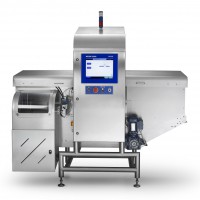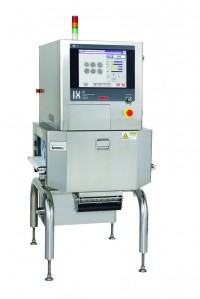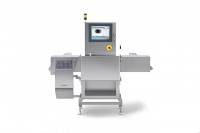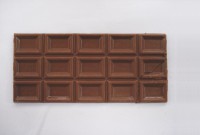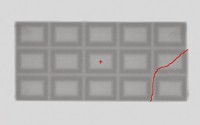Bizerba SE & Co. KG , Ishida GmbH, Mettler-Toledo Produktinspektion Deutschland , MULTIVAC Sepp Haggenmüller SE & Co. KG
X-ray inspection systems for dependable detection of foreign material
Glass splinters, metal burrs, plastic parts – debris contaminating food products is the bane of any manufacturer. Efficient X-ray inspection systems are available for systematic detection and elimination of foreign material. They help food makers safeguard consumer health, mitigate the risk for extensive recall campaigns, and make sure that the reputation of their brands and compliance with applicable regulations remain intact.
By Bernhard Reichenbach
Looking at the large-scale recall campaign staged by the confectionery manufacturer Mars, one thing becomes obvious: foreign matter like metal or plastic particles in food that put consumer health at risk can mushroom into an exceedingly expensive and compromising issue. Several vendors have developed systems to reliably filter out unwanted objects and eliminate the resultant dangers. “Employing state-of-the-art technology in food production may reliably keep foreign objects at bay and thus avert financial loss as well as damage to the corporate image,” assures Dieter Conzelmann, Director Industry Solutions for Bizerba, the Balingen-based weighing, inspecting and labelling technology specialist.
X-ray inspections are based on three principal components
A metal detector is the instrument of choice where production lines are primarily at the risk of metal contamination. Where other types of foreign objects such as plastic, glass or stone particles are cause for concern too, one should opt for X-ray inspection systems instead. “They have different X-ray absorption characteristics from the surrounding product − due to their density, chemical composition or mechanical dimensions,” explains Conzelmann. “Faulty products are easily sorted out during production. Other flaws such as cracks or air inclusions in tubes or cans can also be detected with the help of this technology. This way manufacturers can be sure that their products are pristine and in compliance with the IFS and HACCP guidelines as well as national legislations.”
X-ray inspection systems are based on three principal components: an X-ray generator, a detector, and a computer. Once the system is switched on, electrically generated X-rays will penetrate through the food product and strike the detector. Intensity fluctuations of the radiation that makes its way to the detector across the food product indicate the presence of foreign matter, as it has a different density from the product proper. Unlike the radiation emitted by radioactive substances, the radiation from X-ray inspection systems can be turned on and off.
Desirable foreign matter is masked out
In fact there are safety concerns over whether the radiation that the system operators themselves and the products are exposed to may present a health hazard. Manufacturers, however, claim that these concerns are unwarranted because the doses used to radiograph products in the food industry are extremely low. In addition, the systems come equipped with safeguards like protective curtains and safety latches by default. When using the X-ray inspection systems, however, a radiation protection officer is required in the company (for legal reasons). Food products do not become radioactive during an X-ray inspection and remain as tasty and nutritious as before. No matter which X-ray inspection solution a food maker chooses: It must be custom designed for use at the critical control points, be it at the input or output end of the line. Another aspect to be contemplated is the user friendliness of the technology, and whether it allows for swift and efficient product changeovers – an important advantage especially when it comes to production lines built for short production runs.
Also, consideration should be given to how far the X-ray inspection system in question has additional quality checking capabilities beyond the detection of foreign matter. Likewise, it should be considered whether the system is capable of meeting the hygiene requirements and ambient conditions of the production line. Users should also check for available data monitoring options to demonstrate that the requirements on process safety were duly complied with in case of a product recall. Moreover, they should keep in mind the level of support that the supplier of an X-ray inspection system can deliver.
The Bizerba company is one of these suppliers. Bizerba’s XRE_2 X-ray inspection system can detect foreign objects as well as deformed, faulty or missing parts and trimmings with the help of fully automated X-ray technology. (See article: How can Bizerba prevent recall campaigns).
X-ray inspection system by Mettler Toledo
The X-ray inspection system Safeline-X-ray, type X36 by Mettler-Toledo in Gießen is custom designed for checking food products in small, medium, and large format packages. According to the manufacturer, the series, while also being the most versatile, represents the cutting edge in the field of X-ray systems, amalgamating state-of-the-art radiography technology with superior contamination detection capabilities. The extremely flexible system has been conceived for single- and multi-track applications and is readily adaptable to individual user requirements. The type X36 devices are very well capable of detecting foreign materials from glass, metal, stone, bone and high-density plastic even in the presence of aluminium or metallized-film packaging. The system can carry out inspection tasks in single- and multi-track applications at high line velocities. By default, up to 1000 products can be checked per minute. Conveyor belts with widths from 300 to 600 mm are disposable, depending on the specific application. The maximum product height is 240 mm with outward transfer and 300 mm without.
Even tiny foreign objects don‘t pass undetected
With the Baseline I 100 model, Multivac Marking & Inspection in Enger (Westphalia) has created a compact system designed to check primary and secondary packaging in small and medium formats. Offering a hygiene-optimized layout, the inexpensive entry-level apparatus detects foreign objects in packagings as well as missing or defective products. The X-ray inspection unit mounts a durable diode array that, with a 0.4 mm resolution, guarantees excellent detection accuracy and the ability to trace even tiny foreign objects. Results are visualized on a 15" colour touchscreen that doubles as the control unit. The extensible standard model has enough memory capacity to store the parameters of up to 100 products. The comprehensive software package offers programmes that can visualize foreign matter and evaluate the results of counts and completeness or filling level checks. The system seamlessly integrates with existing production lines. Slanted surfaces and the balcony-type construction make it easy to clean while the stainless-steel design meet the requirements of the IP65.
Maximum safety with inspection systems from Ishida
Devised for checking of confectioneries, the IX-GA 4075-X-ray detection system delivered by Ishida in Schwäbisch Hall, while reliably spotting foreign material, offers a range of additional quality control features. “For most users, X-ray inspection systems are the gold standard when it comes to detecting foreign objects,” says Herbert Hahnenkamp, Managing Director Ishida GmbH. “One unit equipping each packaging line and you got maximum safety. Nowadays, X-ray inspection technology is significantly less expensive than it was just a couple of years ago.”
Even minuscule particles of metal, glass, plastic, vulcanite and the like don’t elude the IX-GA-4075, which also spots product flaws and displaced securing clips. Unlike metal detectors, the system can identify existing inconsistencies even in canned or metallised film-wrapped products. The quality control process is not affected by temperature or salt/water content of the product. The products to be inspected are conveyed at a top speed of 60 m per minute through the inspection chamber, which has a maximum height of 220 mm. Products to be controlled can be up to 400 mm wide and of any length.

